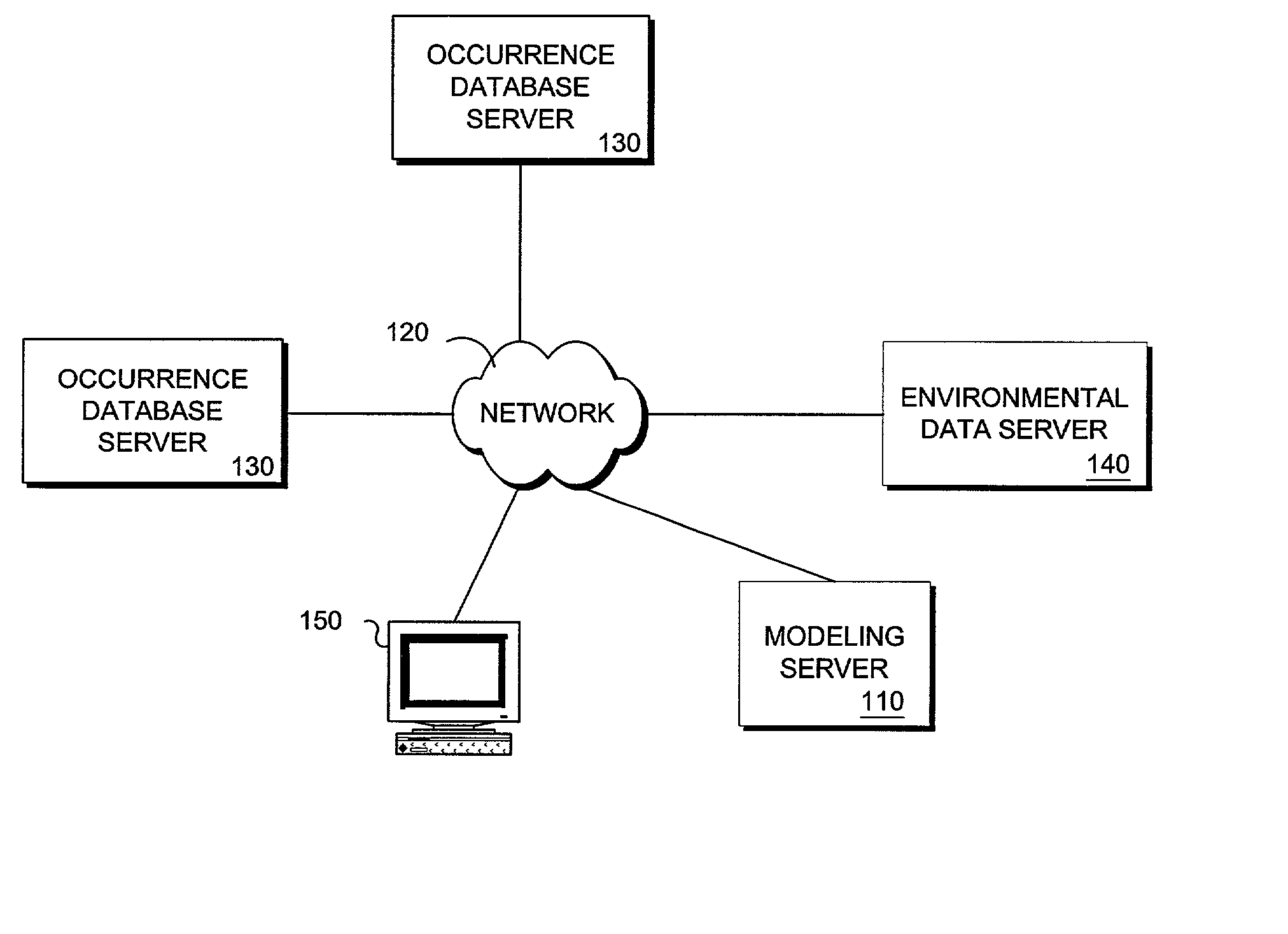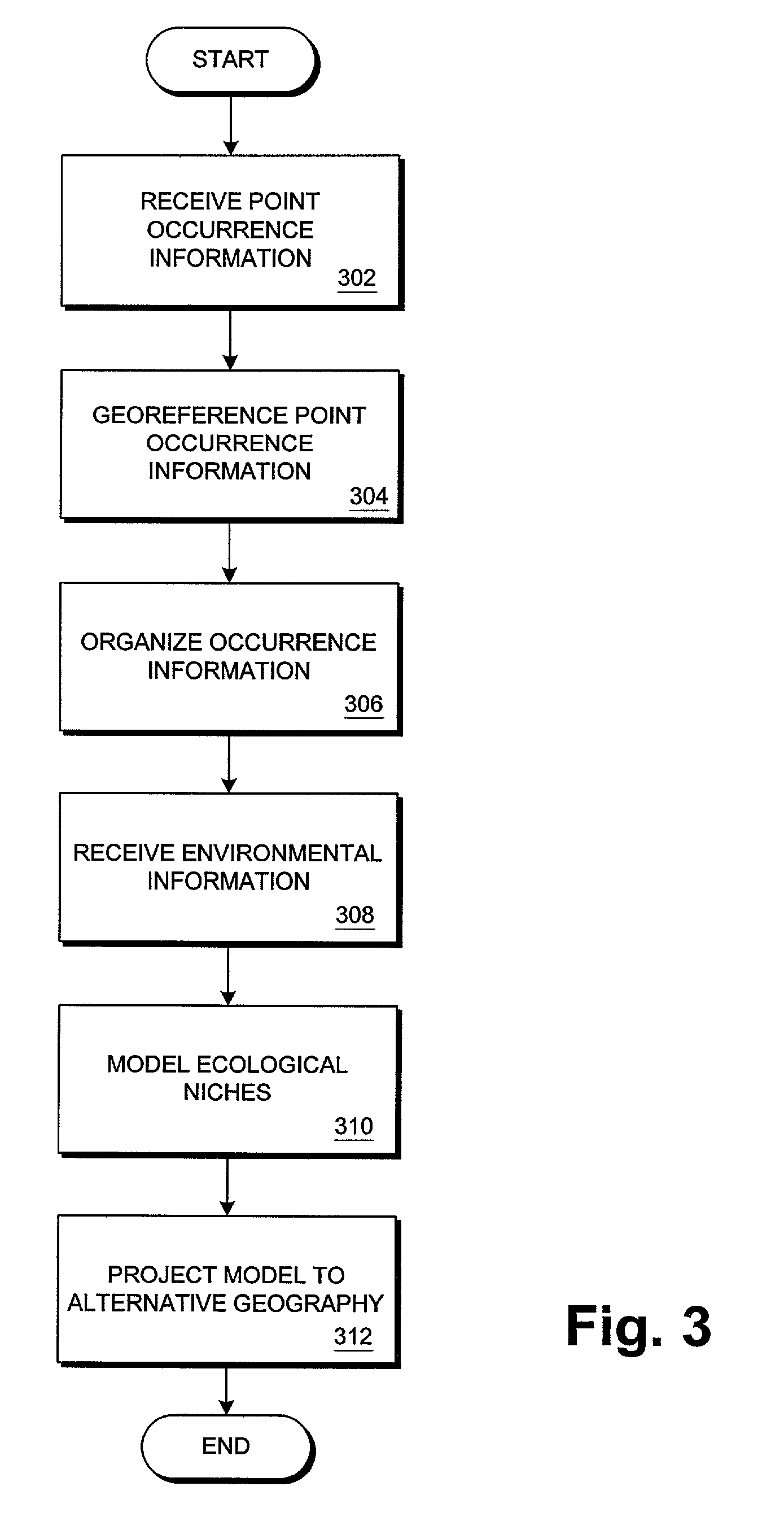Processes and systems for predicting biological species invasions
a technology of biological species and processes, applied in the field of processes and systems for predicting biological species invasion, can solve the problems of extinction of native species, significant economic, ecological and human health effects, and compromise transportation and agricultur
- Summary
- Abstract
- Description
- Claims
- Application Information
AI Technical Summary
Benefits of technology
Problems solved by technology
Method used
Image
Examples
Embodiment Construction
[0066] Cattle egrets (Bubulcus ibis) were originally restricted to the Old World Tropics in Africa and southern Asia. A flock of this species, however, was blown across the Atlantic Ocean to northeastern South America in the 1950s, where a population became established. Cattle egret populations quickly spread throughout the New World Tropics, and north through Central America and Mexico into the southern United States.
[0067] Using 70 historical records from 1958-1988, cattle egret populations in Mexico during their northward invasion were tested to determine whether the spatial extent of their U.S. colonization could be predicted accurately. The ecological niche model for the species in all of North America was based on eight geographic themes, including aspects of vegetation, precipitation, and temperature. The predictions of the model were tested with 673 known occurrence points drawn from the results of the U.S. Breeding Bird Survey ("BBS").
[0068] The portion of this model extend...
PUM
 Login to View More
Login to View More Abstract
Description
Claims
Application Information
 Login to View More
Login to View More - R&D
- Intellectual Property
- Life Sciences
- Materials
- Tech Scout
- Unparalleled Data Quality
- Higher Quality Content
- 60% Fewer Hallucinations
Browse by: Latest US Patents, China's latest patents, Technical Efficacy Thesaurus, Application Domain, Technology Topic, Popular Technical Reports.
© 2025 PatSnap. All rights reserved.Legal|Privacy policy|Modern Slavery Act Transparency Statement|Sitemap|About US| Contact US: help@patsnap.com



